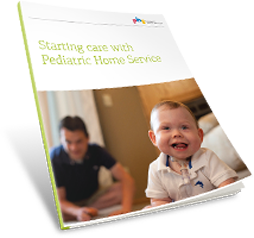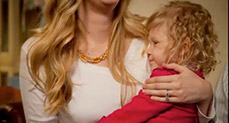Training Creates Excellent Home Care Nurses
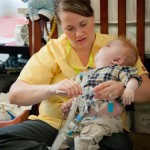 When a child is in the hospital, a team of health care providers is available to react in the event that something goes wrong. Similarly, if there is a medical issue in the home setting, a health care provider needs to be prepared to take control. PHS ensures any nurse working in a home is trained and ready to react – because this time, they’re running the show.
When a child is in the hospital, a team of health care providers is available to react in the event that something goes wrong. Similarly, if there is a medical issue in the home setting, a health care provider needs to be prepared to take control. PHS ensures any nurse working in a home is trained and ready to react – because this time, they’re running the show.
While our home care nurses have an entire team of respiratory therapists, infusion nurses, pharmacists and support staff available 24/7 with one phone call, PHS focuses on training them extensively beforehand to ensure they are completely prepared to provide care.
Multi-Faceted Orientation
When a nurse is hired by PHS, they begin their training at our office in Roseville, receiving five and a half days of interactive orientation that covers everything from equipment education classes and a simulation lab to cultural diversity training and ordering supplies.
“Our training is second to none in the home care industry,” says Barb Weisenberger, Director of Nursing. “We provide expanded training, because they need to know every aspect of a patient’s medical needs – we send them into the homes well rounded so they can react properly in any situation.”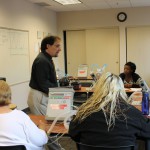
Because new hires may not have received extensive education on equipment and supplies such as vents, trachs, or feeding tubes in the past, nurses have a number of classes incorporated into their first week where they are educated on these medical devices they are likely to encounter in the home.
Roy Maynard, medical director at PHS, meets with new nurses to discuss pharmacology as well as physician communication to ensure the nurse knows how to manage communication with physicians after hours.
Finally, after a five day orientation, nurses spend half a day going through a simulation lab set up at the PHS office, which tests their ability to respond to situations that frequently occur in the home. This way, trainers can confirm a nurse’s ability to manage equipment and processes, or determine if there is further training is needed.
Training in the Home
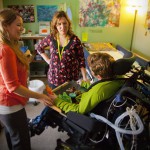 Once a nurse has completed orientation and is ready to begin their training in a home, they spend time with a PHS preceptor, or ‘trainer nurse.’ The preceptor will test the nurse on competencies included in an orientation checklist and train the new nurse on routines within the home as it relates to the specific patient.
Once a nurse has completed orientation and is ready to begin their training in a home, they spend time with a PHS preceptor, or ‘trainer nurse.’ The preceptor will test the nurse on competencies included in an orientation checklist and train the new nurse on routines within the home as it relates to the specific patient.
This training will focus on how the family and patient like specific cares done and also address the family’s preferences for their nurses in the home. We understand preference in cares and in-home nursing can vary for each family, and as long as it is safe, nurses are trained to follow the preferred care plan of a parent or caregiver.
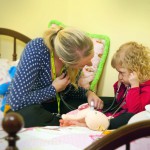 Once the nurse has completed the orientation competencies, they are buddied with another nurse who knows the specific patient well to work alongside the nurse and ensure they are completely confident in caring for the child.
Once the nurse has completed the orientation competencies, they are buddied with another nurse who knows the specific patient well to work alongside the nurse and ensure they are completely confident in caring for the child.
“We don’t leave them alone until we’re 100% sure they’re confident, and so is the family,” says Barb. “If that’s 10 training shifts, we’re there for 10 shifts. We have to have a more expanded training, because they need to know every aspect of a patient’s medical needs – we send them into the homes well rounded so they can react properly in any situation.”
Maintaining Consistent Communication
Once a nurse is prepared to provide care individually, they have an extensive support team available for any needs, and have a specific case manager who they are in communication with regularly. Nurse supervisors are regularly connecting with the nurses they oversee, providing any training or feedback that will help them improve care. Annually, nurses go through the simulation lab for testing, take quizzes, and receive an evaluation.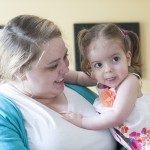
Care conferences are held at least once a quarter for each home care patient, where nurses for that child get together to review what is working best, what isn’t and provide any additional coaching as needed. Thanks to live charting capabilities, all of the child’s medical information is immediately available for clinicians back at the PHS office, so every person involved in the patient’s care can be constantly up to date.
Looking Forward in HCN
Since home care nursing opened at PHS over three years ago, the department has adapted how it functions to best suit the needs of our patients. New roles have been created, existing roles have been revised and expanded, and soon, long-term succession training will take place as senior management prepares for retirement.
 As we continue to grow and adapt, our mission stays the same – to take care of the child. Whether it is supervisors overseeing nurses, home care nursing coordinators ensuring a home is staffed, or extensive training empowering each of our nurses to react to situations with knowledge and confidence, each staff person knows they play a role in care for our patients. With each team member playing their part, children are able to be at home and families can live their lives uninterrupted.
As we continue to grow and adapt, our mission stays the same – to take care of the child. Whether it is supervisors overseeing nurses, home care nursing coordinators ensuring a home is staffed, or extensive training empowering each of our nurses to react to situations with knowledge and confidence, each staff person knows they play a role in care for our patients. With each team member playing their part, children are able to be at home and families can live their lives uninterrupted.
